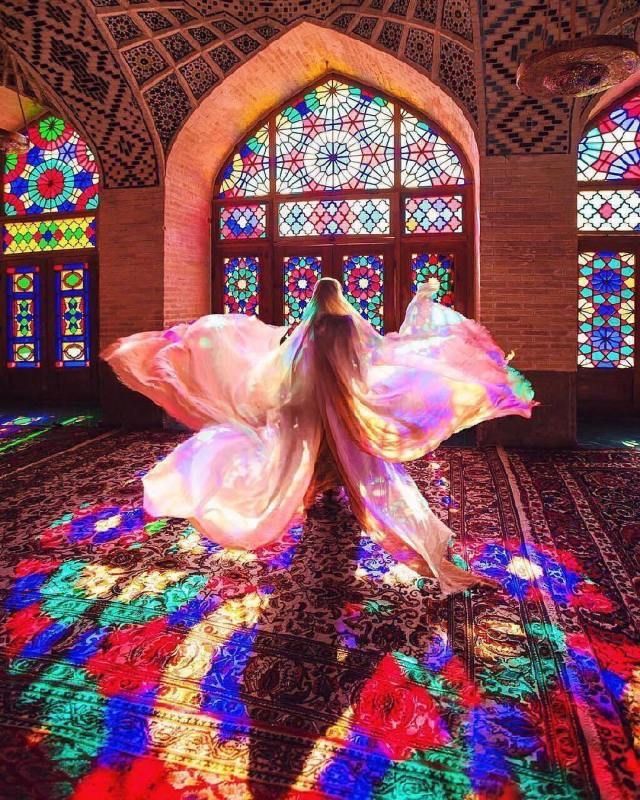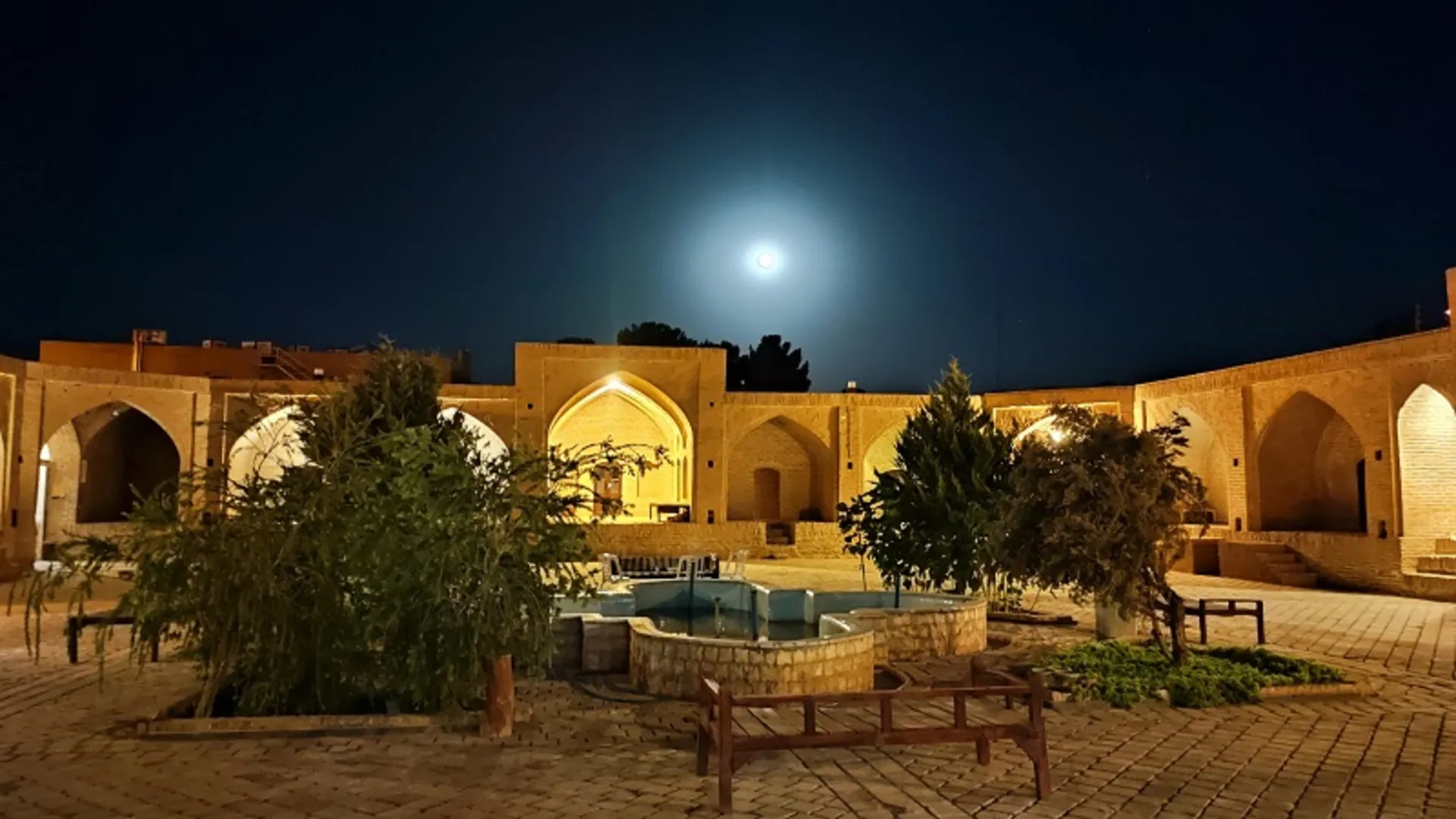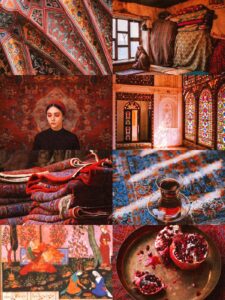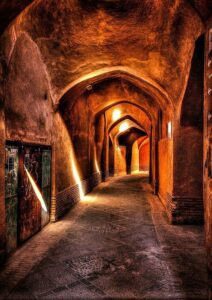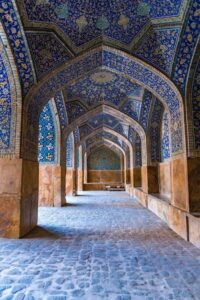When you travel through Iran, you may imagine grand mosques, fragrant markets, and ancient gardens. But hidden between these landmarks are resting places once essential for long journeys, caravanserais. These historic inns tell stories of weary travelers, caravans creaking under load, and nights under stars. Exploring them is like stepping into a bridge between past and present.
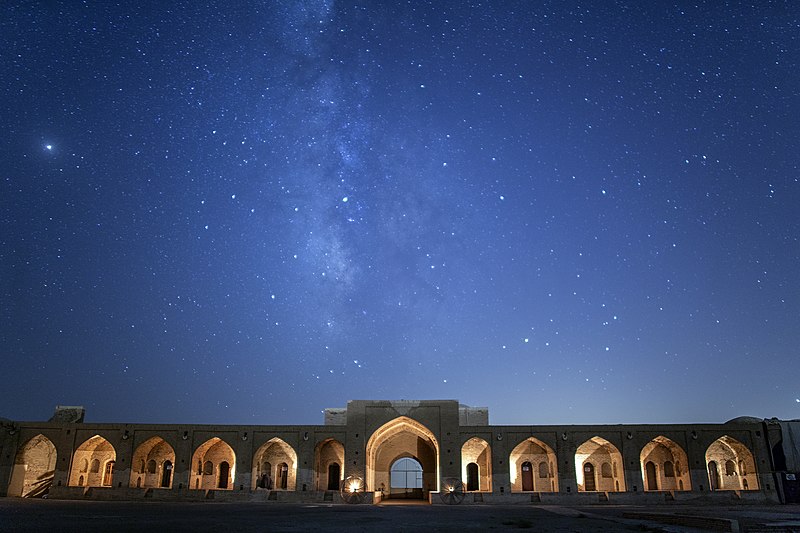
What Were Caravanserais?
Caravanserais (also called caravanserā, rabāt, sara) were built along old trade routes, including the Silk Road, to provide shelter for travelers, their animals, and goods. Their architecture served practical needs: shade, water, safety, and community. Iran’s geography, deserts, mountains, long stretches between towns, made these stops essential.
After Islam, the caravanserai design evolved. Large courtyards, vaulted entrances, multiple chambers, and guards towers became signature features. Many were built in the Safavid era, which is considered a golden age for their architecture.
Stories from Travelers and Traders
Imagine crossing desert dunes or rugged mountain paths. You’ve been walking all day. Then you reach a caravanserai, walls of mud brick, a quiet water fountain in a central courtyard, lantern-lit corridors. You rest, you share meals with strangers who become friends. Trades are made in whispered voices; stories exchanged in the shade.
These caravanserais were sites of connection: between East and West, merchants and scribes, from spices to silks. The Silk Road passed through many of them. These inns preserved safety, refreshment, and human interaction in vast landscapes.
Notable Caravanserais to See
Here are some special ones worth visiting:
•Caravanserai Ti Ti, Gilan: Located on a green hill between Siyahkal and Deylaman. Ti Ti is built with river stones, bricks, mortar and traditional materials. Once a rest point for caravans, it blends with nature, moss, forest, quiet.
•Zin al-Din Caravanserai, Yazd Province: This circular or 12-sided caravanserai, part of the Shah Abbasi network, was restored and now functions partly as a traditional inn and café, giving visitors a chance to stay overnight in history.
•Qasr-e Bahram, Saman, Semeen: Originally built for travelers crossing deserts and majestic landscapes, now serving as a boutique rural guesthouse. Its stone architecture and quiet courtyards make it feel like stepping back in time.
•Caravanserai Abbas, Bieston: A restored inn in the shadow of the Bisotun mountain and UNESCO heritage. It combines modern comfort with centuries-old design.
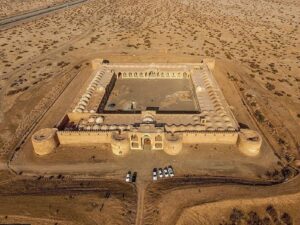
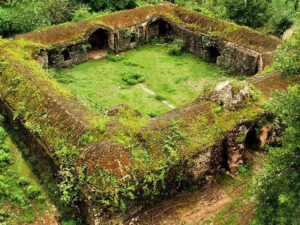
Architecture, Design & Symbolism
Caravanserais share several architectural features:
•Central courtyard: Open sky above, walls around, rooms facing inward. Comfort and safety in the layout.
•Vaulted entrances and archways: Grand gates that both protect and impress.
•Multiple chambers: Rooms for travelers, stables for animals, storage for goods.
•Thick walls and natural materials: Mud brick, stone, plaster—materials chosen for thermal insulation and local availability.
These designs aren’t just beautiful, they solved real problems: heat, cold nights, long distances. Allegories of endurance, hospitality, and human ingenuity live in those old stones.
Why Visiting Caravanserais Feels Different
•Sense of place and history: Staying in one is not just restful, it is reflective. You physically move through spaces built for generations of travelers, under the same stars.
•Quiet and calm: Many caravanserais are now in remote settings. Nights are silent, wind whistles through towers, and the darkness is deep.
•Cultural interaction: Some of them function now as guesthouses or museums. You meet locals, taste traditional food, hear stories you wouldn’t hear otherwise.
Final Note
Caravanserais are more than places to rest. They are testimonies to centuries of human travel, exchange, culture, and care. Visiting them is not only about seeing architecture, but about experiencing a continuity of journey. In Iran, these silent stops along old trade routes invite travelers to slow down, reflect, and walk in the footsteps of history.
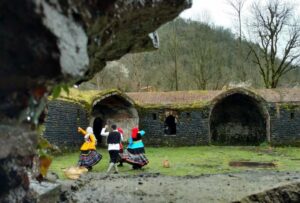
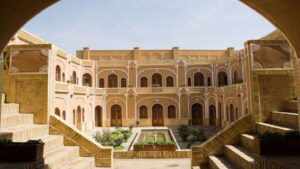
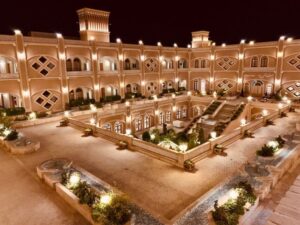
from:
- 📍 Iran, Kashan, Qeshm Island, Tehran
from:

